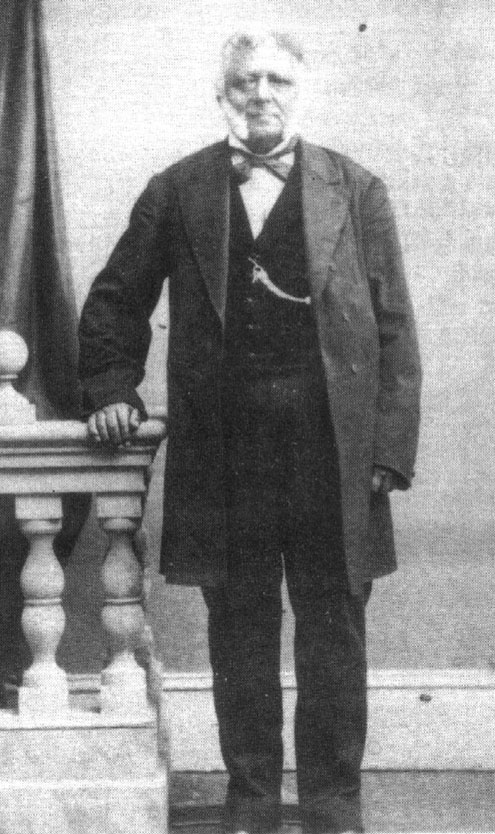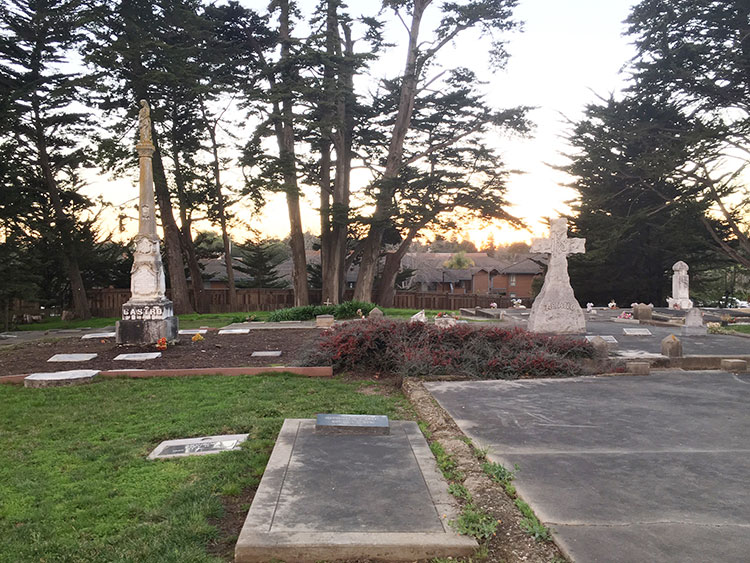For thousands of years, the Awaswas people, who were a division of the Ohlone Native American Tribe, inhabited Santa Cruz County. There were villages in the Santa Cruz Mountains and along the coast spanning from today’s Davenport to Aptos. In 1791 Mission Santa Cruz was built and in 1797 the Villa de Branciforte was established. This is where Rafael Castro was born on October 15, 1803.
Rafael was one of fourteen children. His father was Jose Joaquin Castro who at the age of five, traveled with his parents to Alta California with the Anza expedition. Rafael was considered a “Californio,” (a Hispanic person born in Alta California during the Spanish Colonial Period) and took great pride in this. He clung to the traditions and refused to speak or even learn the English language.
As a young man, Rafael enlisted in the military and served ten years in the Monterey cavalry where he attained the rank of corporal. In 1823, he married Soladad Cota at the Santa Cruz Mission. He was 20 years old and she was 15. Their marriage was not an easy one. They filed for divorce three times but never did they complete the process. Together they raised 12 children and their grandchildren numbered more than 40.
In 1833, as a reward for his military service, Governor Juan Bautista Alvarado granted Rafael 5,500 acres of land, which became known as Rancho Aptos. Mexico had gained its independence from Spain 12 years earlier in 1821, making this a Mexican land grant … not a Spanish one. This was also the first private ownership of land in Aptos!
The original grant stretched from Borregas Gulch near Cabrillo College to Seascape Boulevard and inland over two miles. In 1840, Governor Alvarado increased the grant to 6,685.91 acres. His father, Jose Joaquin Castro, was granted Rancho San Andreas to the southeast and his sister Martina, Rancho Soquel and Soquel Augmentation to the northwest. By the 1840s, over 250,000 acres of land in Santa Cruz County were owned by various members of the Castro family.
In 1848, California annexed to the United States and the official language changed from Spanish to English. All of a sudden the question of land ownership came into play. The burden of proof lay with the landowners to prove they actually owned their land.
Many of these landowners, who didn’t speak English, were forced to defend themselves in an English speaking court. They had to hire lawyers who often charged 1/3 of the value of the land as their fee. As a result, even if you successfully defended your land ownership, a large portion of it would have to be given to the lawyers in lieu of a cash payment.
Rafael was able to make it through the bureaucratic process. His property was surveyed in 1858 and recorded in 1859. His patent was confirmed by letter from President James Buchanan dated April 23, 1860. It was the oldest surviving grant at the time it was confirmed. (Case #172, Southern District.)
Rafael and Soledad built their first house near the confluence of Aptos and Valencia Creeks. However, in 1840, the adobe house was flooded and abandoned. They built their second house, a huge 2-story ranch home, on a ridge-top off Wharf Road, just a few hundred yards south of today’s Rancho Del Mar Shopping Center. The hacienda was occupied into 1915 but fell into disrepair and burned to the ground in 1920. The site was cut into during the construction of Highway 1.
Rafael Castro was an excellent businessman in many fields but he was primarily a cattle-rancher. Castro did not concern himself with containing his cattle. As previously mentioned, his father owned the land immediately down-coast and his sister owned the land immediately up-coast and inland. Their branded herds intermingled from time to time but stayed within the family!
Castro was also able to successfully recognize a great business opportunity by leasing out his land (rather than selling) for farms, mineral rights, logging, a lumber mill, a flourmill, and a wharf.
As the Castro family continued to grow it became the family policy to gift portions of their land grant to their children when they matured, married, or had their first baby.
Rafael did sell a parcel of land to Joseph Arano, who married Castro’s daughter, Augustia, and opened the town’s first grocery and post office. This building still exists today as a private residence and is the oldest house in Aptos. Joseph and Augustia went on to build the Bayview Hotel in 1878.
In 1868, Rafael deeded land for the first school. He also gave land for a Catholic Church and cemetery. The chapel was dedicated in October of 1875. This cemetery still exists today as “Our Lady of Mount Carmel” across from the Aptos Library.
In 1872, Claus Spreckels, the very wealthy “Sugar King” of San Francisco bargained to buy almost all what remained of Rancho Aptos except for the Castro’s 15-acre home site and an 83-acre farm strip for $71,900. This purchase marked the end of the Indian-Spanish-Mexican dominant land ownership in Aptos.
Rafael passed away at the age of 74 on May 14, 1878 and Soledad passed away on April 15, 1889 at the age of 83.
They are buried next to each other in the cemetery they helped create. A 12-foot high monument, visible from the street, marks the Castro Family plot.
•••
For more information about the Aptos History Museum, upcoming events, or becoming a member of the museum, please visit www.aptoshistory.org and follow us on Facebook and Instagram @aptos_history_museum.




